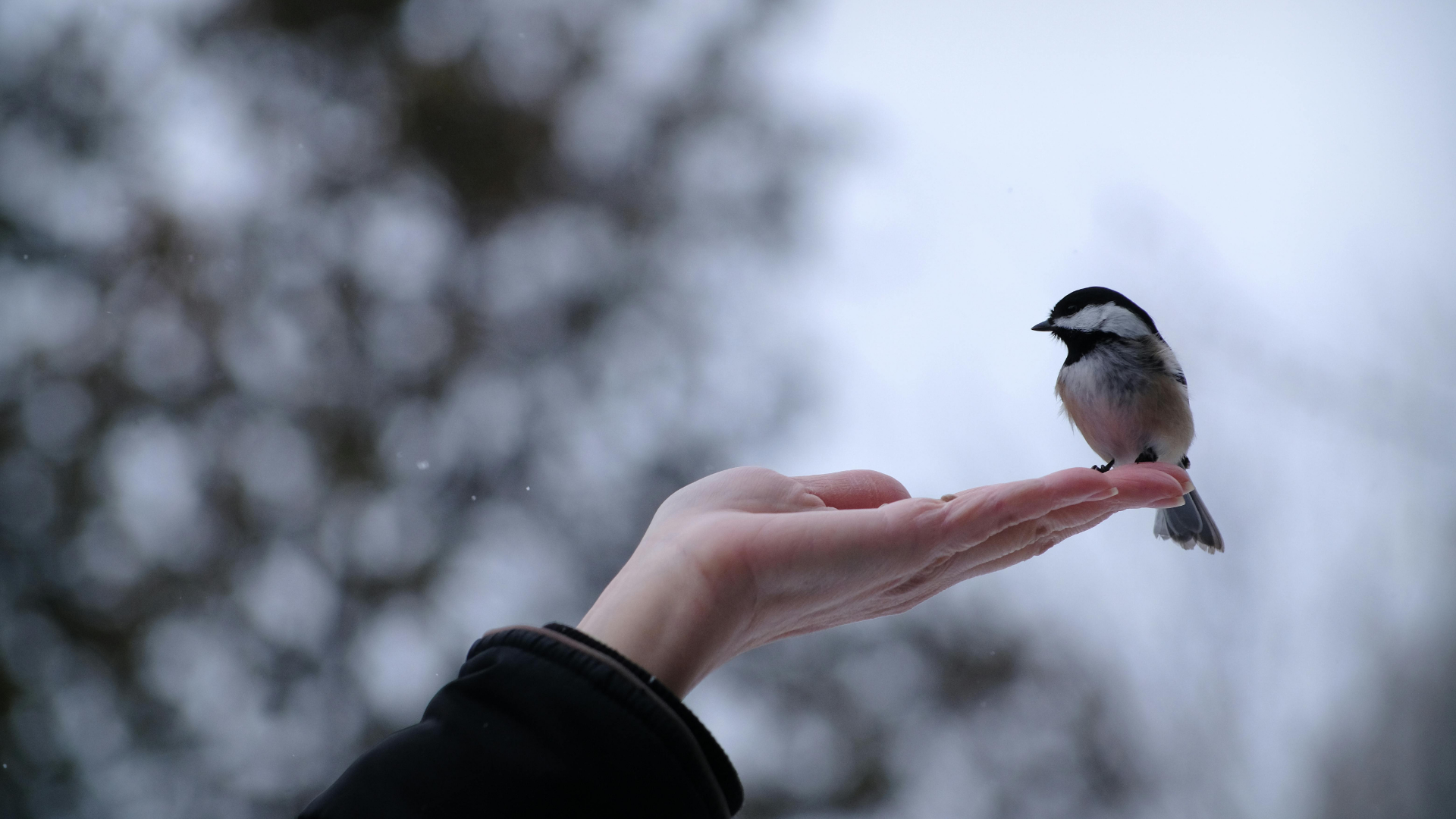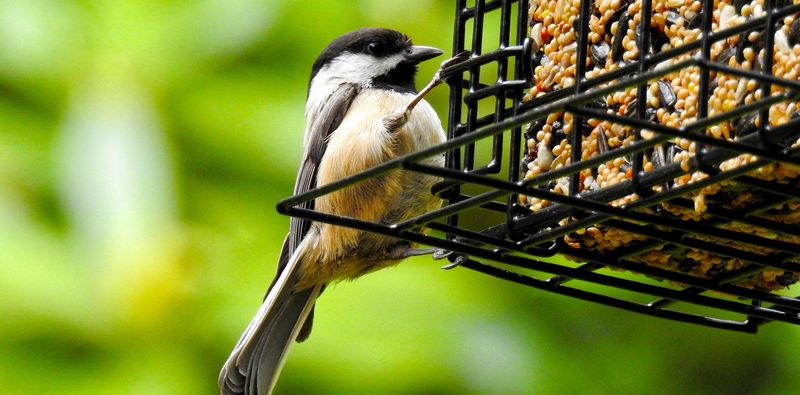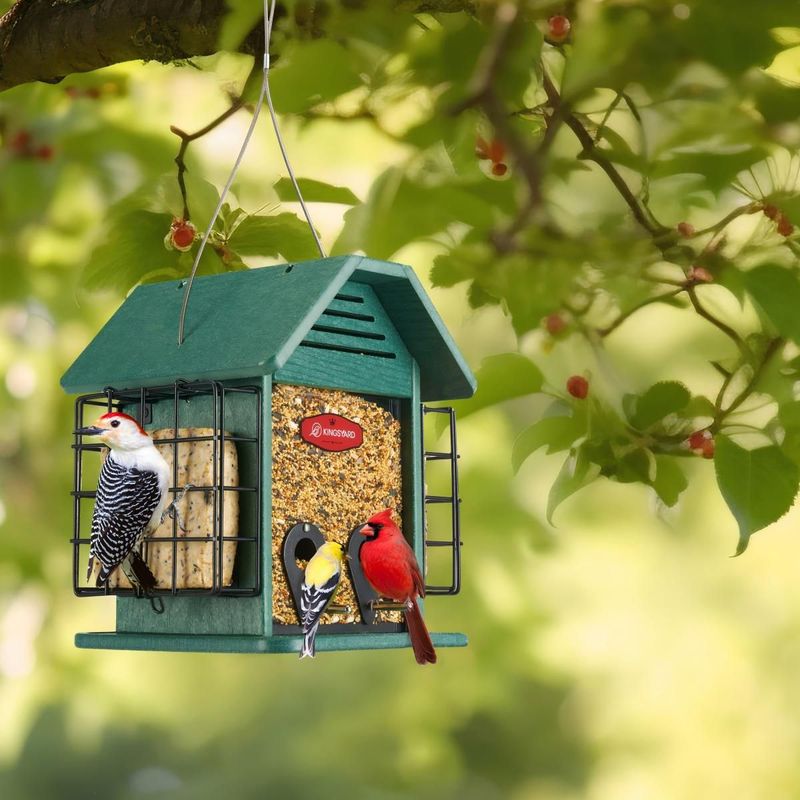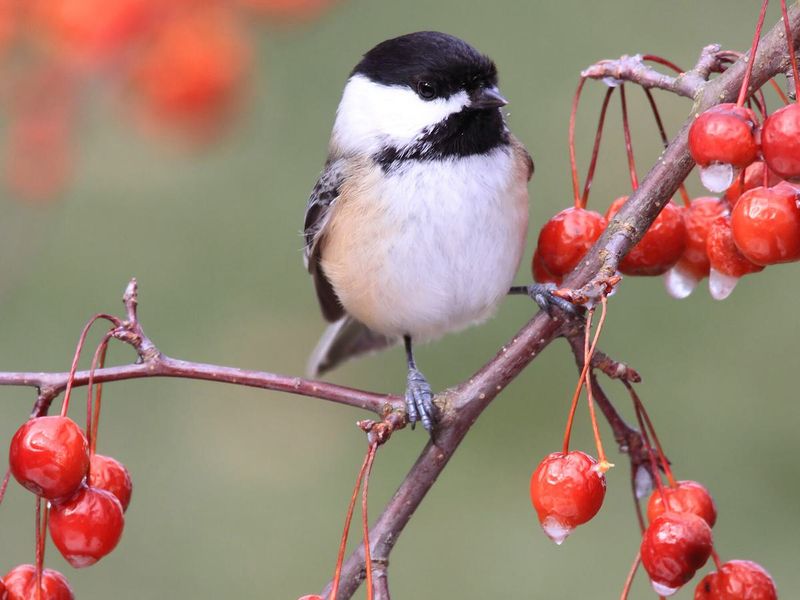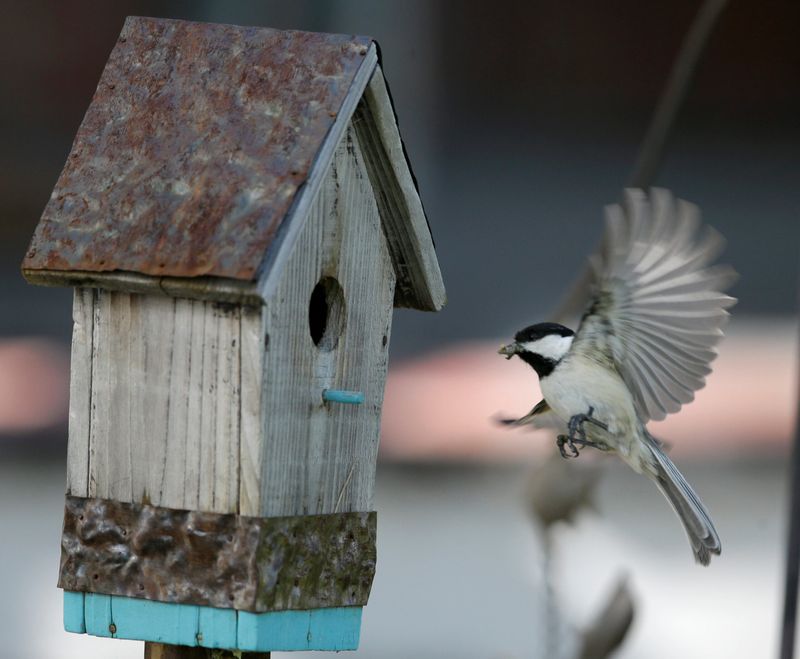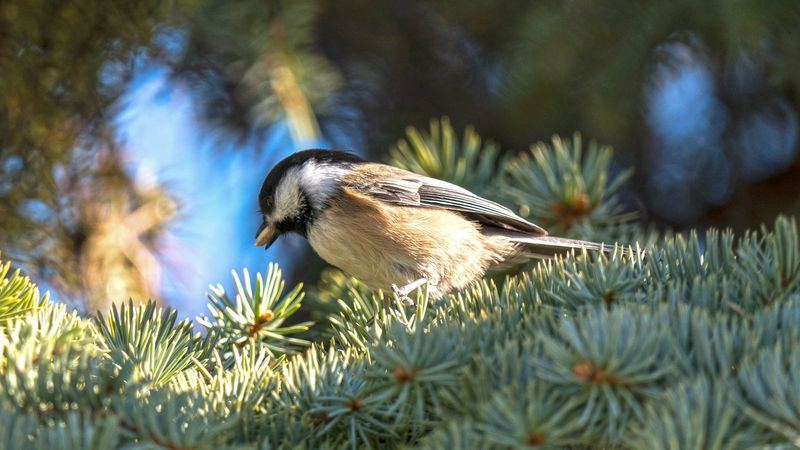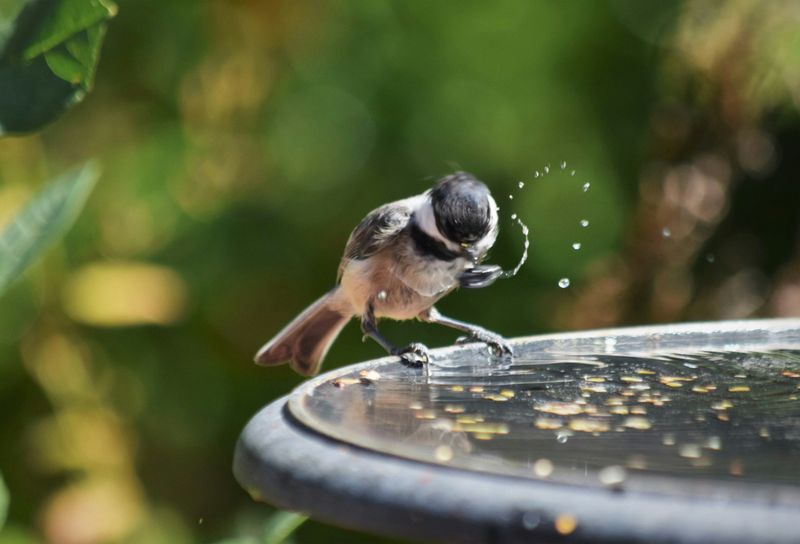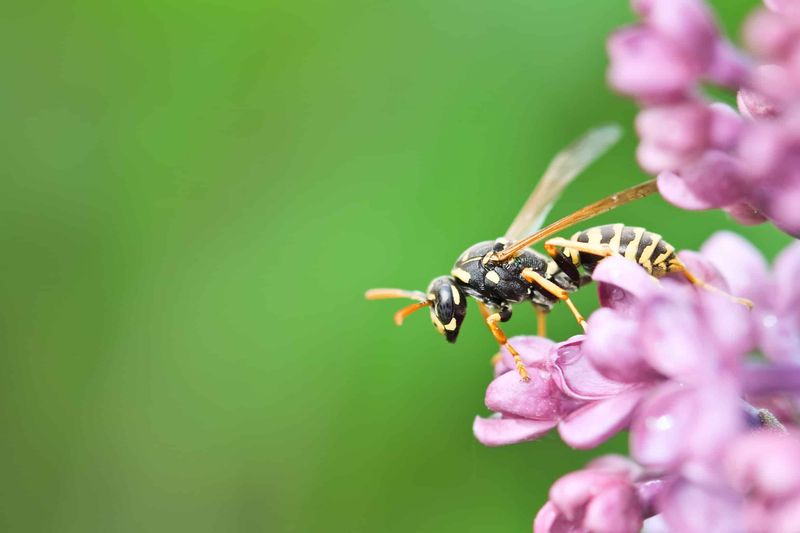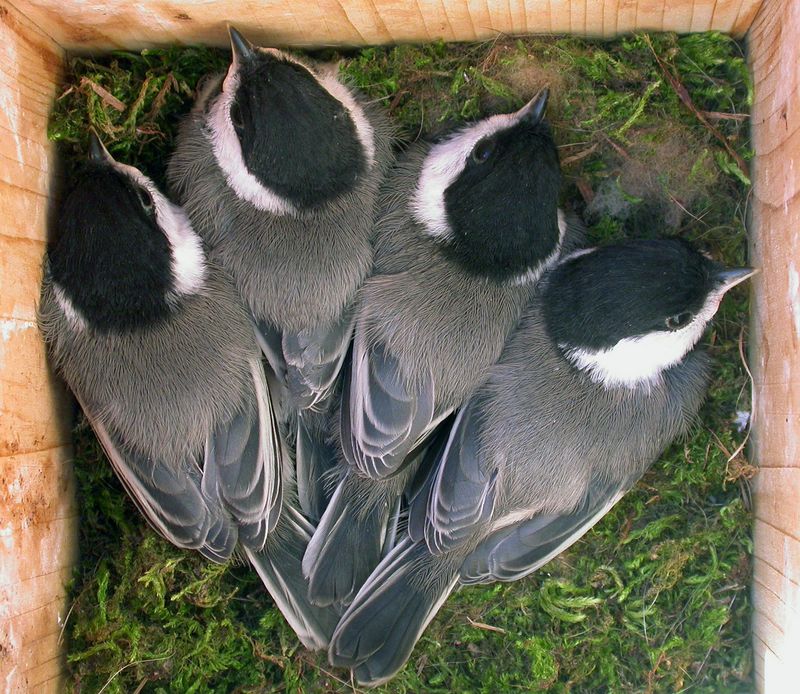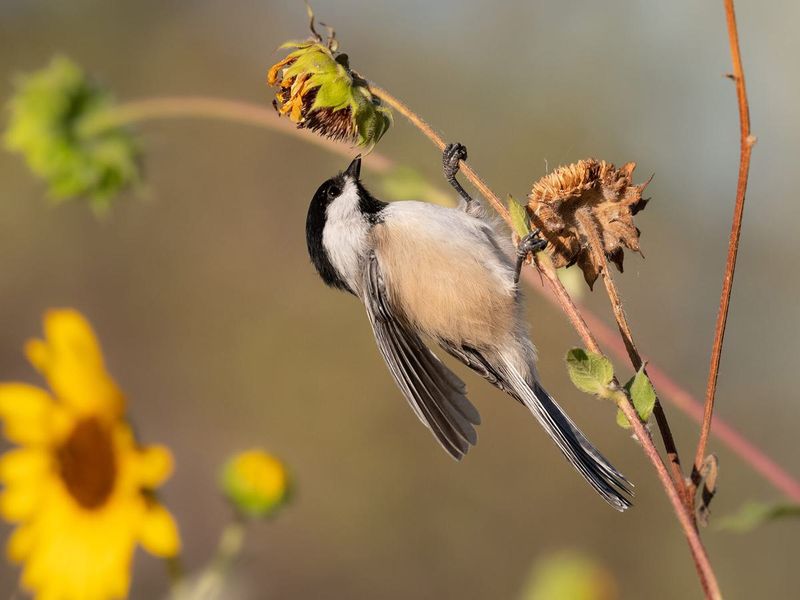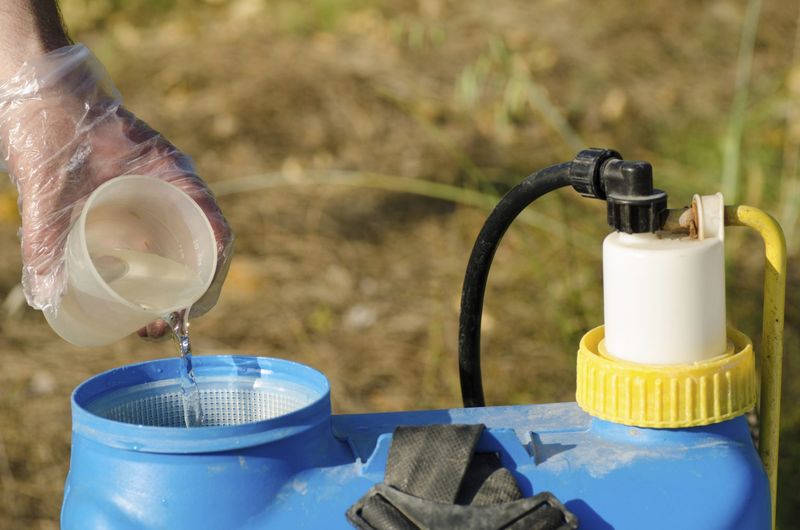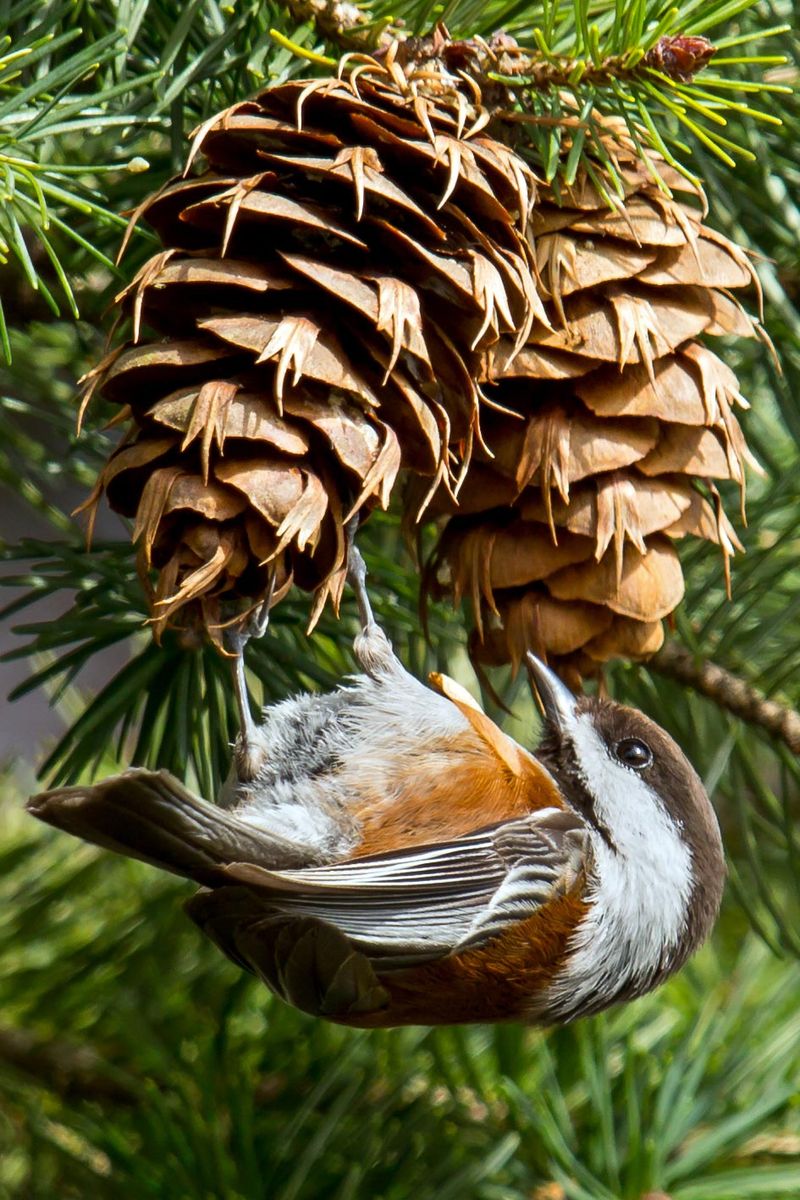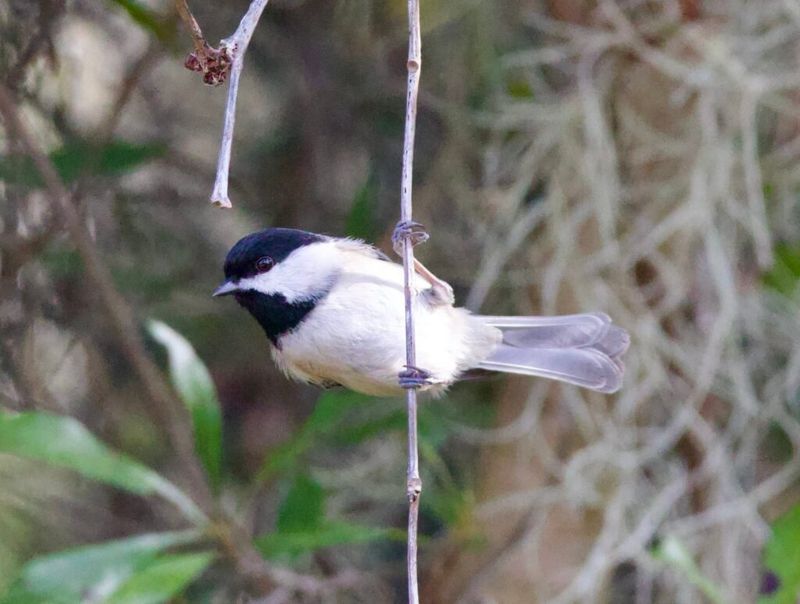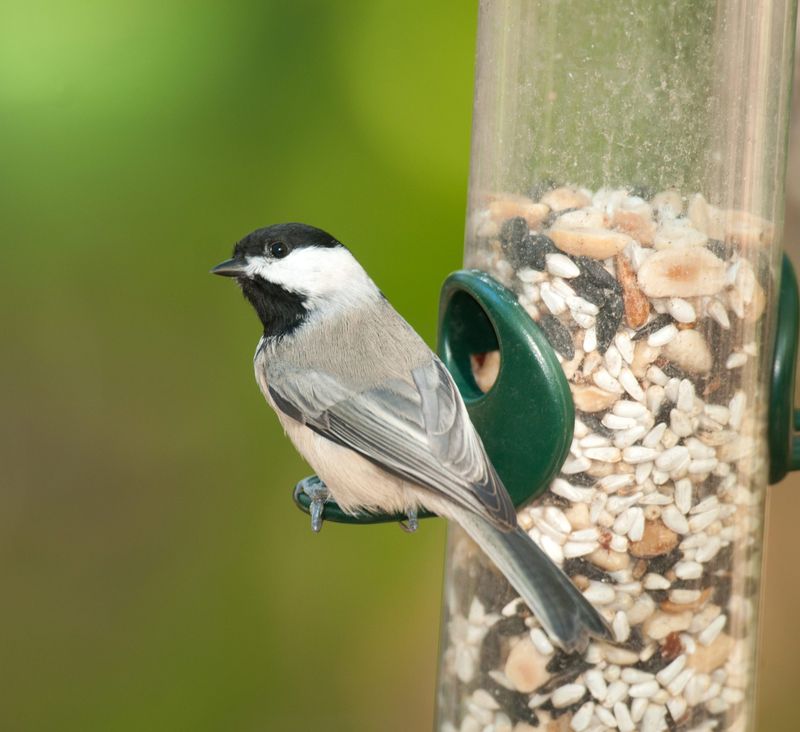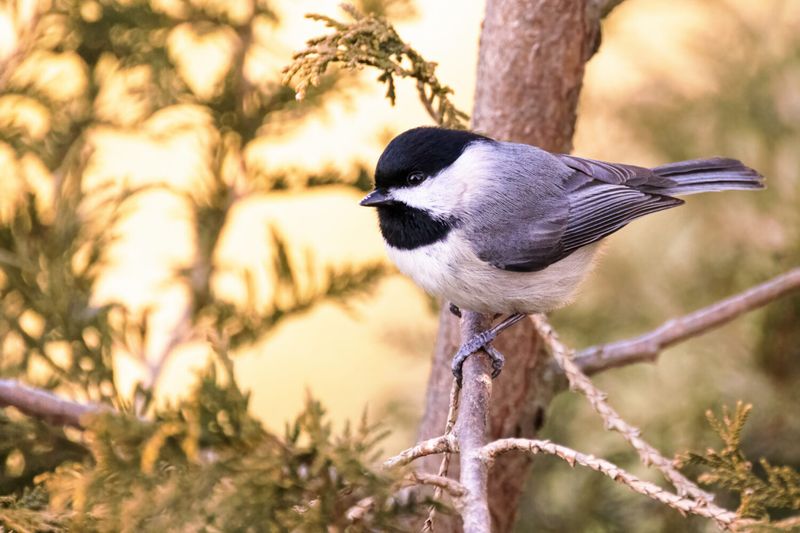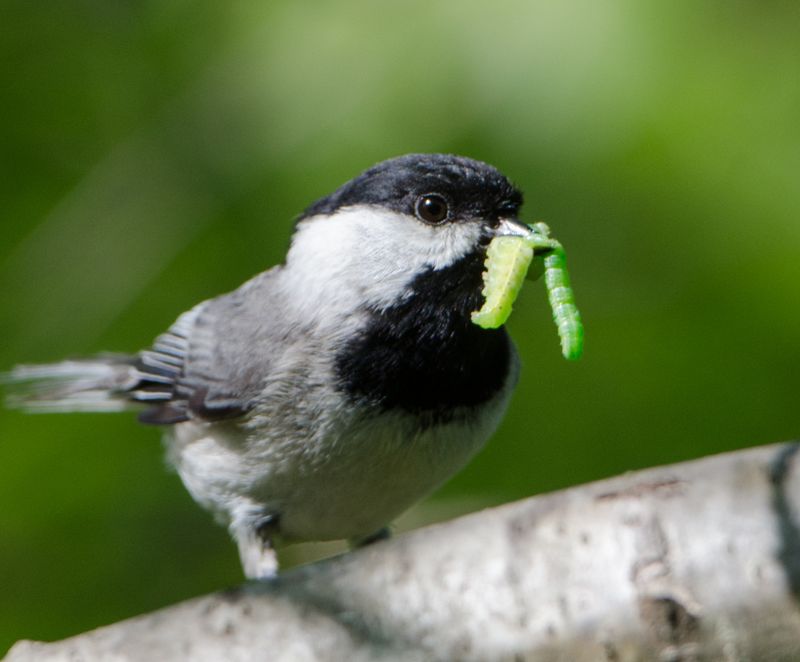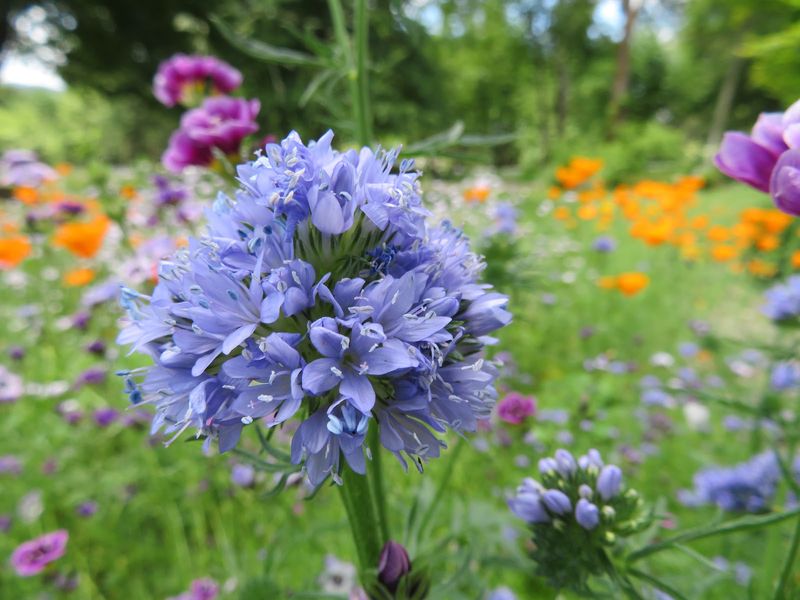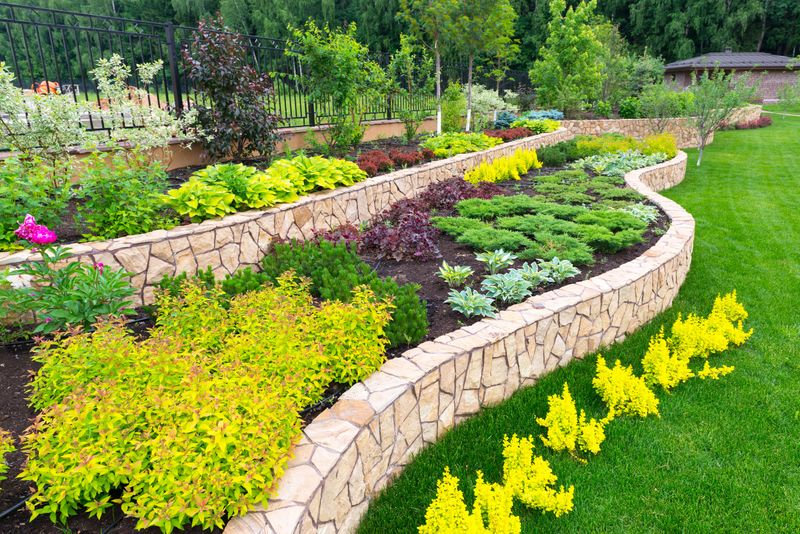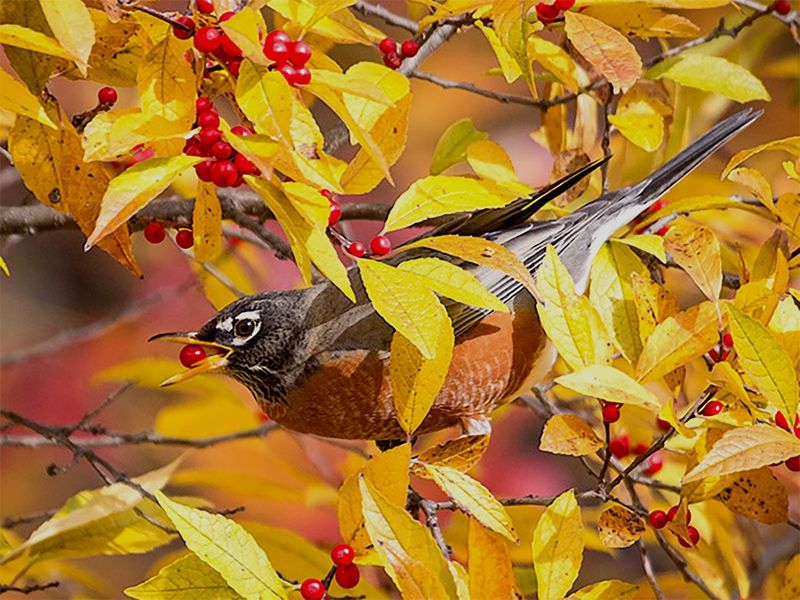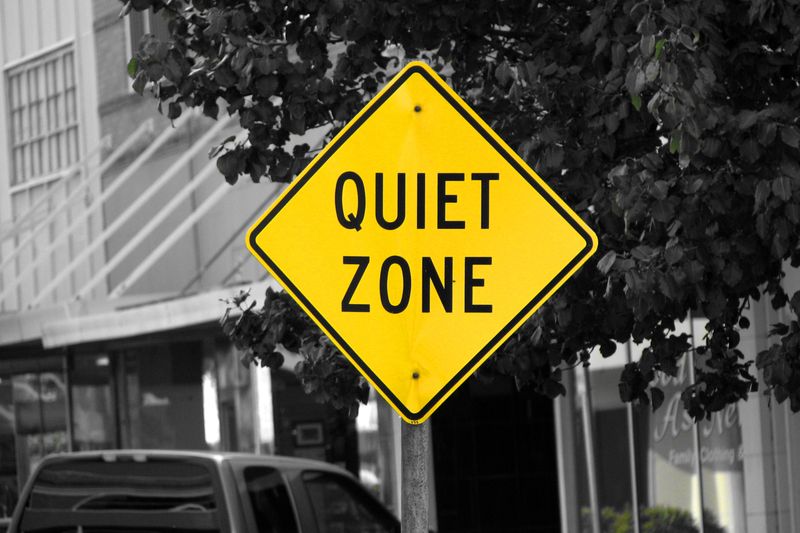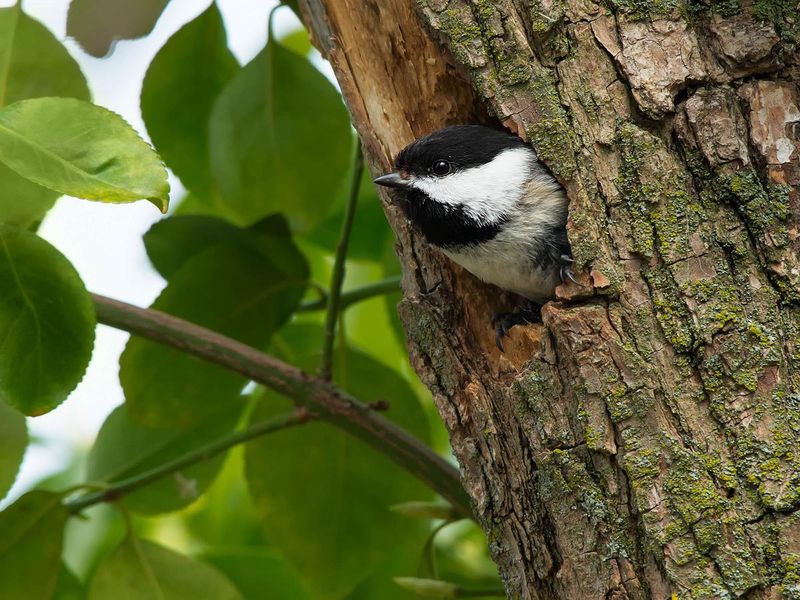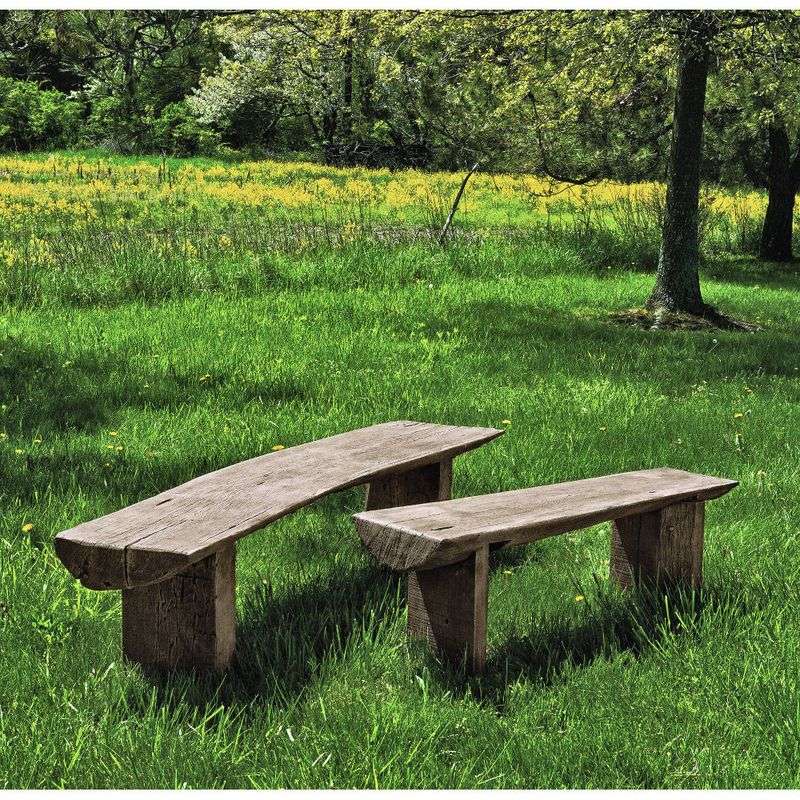Ah, the sweet, cheerful call of the chickadee! Imagine stepping into your garden and being greeted by these delightful little birds.
They’re not just visitors; they’re a joy to watch, bringing life and song to any outdoor space. In my own gardening adventures, attracting chickadees has become a passionate hobby.
These feathered friends aren’t just charming; they play a vital role in pest control and plant pollination. Let’s explore exactly how to make your garden the ultimate chickadee paradise.
1. Black Oil Sunflower Seeds
Imagine a bird’s favorite snack served in a delightful package! Black oil sunflower seeds are a top choice for chickadees due to their high fat content and thin shells that are easy to crack.
These seeds not only provide essential nutrients but also keep these little birds coming back for more. Place a bird feeder filled with these seeds in a visible spot in your garden.
Over time, you’ll notice the chickadees visiting more frequently, making your garden their preferred snack bar.
2. Suet Cakes
It’s all about energy-packed treats! Suet cakes, rich in fat, are perfect for chickadees especially during colder months. These cakes can be flavored with berries or insects which appeal to their palate.
Hang these in wire cages from a tree branch to attract them. Watching chickadees peck at these cakes is quite a sight.
They gain the necessary energy to sustain themselves and you’ll get the joy of their lively presence. Suet cakes are a win-win for both garden and bird.
3. Berries
Think of a fruity delight that draws chickadees in! Berries such as serviceberries and elderberries are irresistible to them.
Planting these bushes provides a natural food source and adds beauty to your garden. Chickadees love these juicy treats and will frequent your berry bushes throughout the season.
The shrubs not only feed the birds but also offer shelter and nesting sites. Your garden becomes a spot where chickadees find both food and home, turning it into their personal haven.
4. Nest Boxes
Creating a cozy home is key! Nest boxes offer chickadees a safe and inviting place to build their homes. Install these boxes around your garden, keeping them at least 5 feet above the ground.
Make sure the entrance hole is small to deter predators while being just right for chickadees. These boxes offer protection from harsh weather and predators.
Chickadees will surely appreciate this thoughtful accommodation. You’ll soon witness the delightful cycle of nesting and raising young in your garden.
5. Native Trees
Native trees are like natural apartments for chickadees! Trees such as oak and birch supply food through insects and seeds while offering shelter.
Chickadees find comfort and safety among their branches. These trees act as a foundation for attracting these birds. They encourage a balanced ecosystem that supports diverse wildlife.
By planting native trees, you create an environment where chickadees can thrive, ensuring they’re drawn to your garden year-round. It’s a simple but effective strategy.
6. Water Features
Water is a magnet for chickadees! A birdbath or small pond can be a delightful attraction. Chickadees enjoy drinking and bathing, making these features a regular pit stop.
Ensure the water is clean and shallow enough for their tiny bodies. In winter, consider a birdbath heater to keep the water ice-free.
Watching them splash around is a joyous sight. A garden with a water feature not only attracts chickadees but provides endless entertainment for the observer.
7. Insect-Friendly Plants
The buzz of insects is music to a chickadee’s ears! Plants like goldenrod and milkweed attract insects, providing a food source for these birds.
They feast on caterpillars, beetles, and aphids found among the leaves. By planting insect-friendly varieties, you ensure chickadees have a plentiful diet.
This natural method encourages them to stay as they happily hunt for their meals. A garden alive with insects is an inviting place for chickadees, creating a sustainable environment for both birds and plants.
8. Sheltered Corners
Privacy and protection are paramount! Dense shrubs and hedges offer chickadees a sheltered retreat. These areas provide cover from predators and harsh weather.
Chickadees use these nooks for resting and socializing, making them feel secure. Design your garden with tucked-away corners featuring native plants.
This habitat mimicry ensures that chickadees find a haven in your garden. The peace and tranquility of these shelters are ideal for chickadees, offering them the comfort they seek.
9. Seasonal Food Varieties
Variety is the spice of life, even for chickadees! Offering seasonal food options, such as seeds in winter and insects in summer, keeps chickadees interested.
Rotate the food types as the seasons change to provide consistent nourishment. This strategy keeps them returning, knowing your garden caters to their needs year-round.
Incorporate feeders and plants that bloom at different times. Chickadees appreciate the changing menu and your garden benefits from their lively presence and natural pest control.
10. Avoid Pesticides
Pesticides are a no-go for a chickadee-friendly garden! These chemicals reduce the insect population, which chickadees rely on for food.
Embracing natural gardening practices allows these birds to feast on insects freely. Let chickadees be your pest control team as they naturally manage insect levels.
By avoiding pesticides, you create a welcoming environment. This decision supports a healthy ecosystem, encouraging chickadees to stay and enjoy your garden.
11. Evergreen Trees
Evergreens are the winter shelter heroes! These trees provide year-round cover, offering chickadees a place to hide from predators and harsh weather.
Chickadees take refuge in the dense foliage, finding comfort and warmth. By planting evergreens, you ensure that your garden remains a haven throughout the seasons.
The constant supply of shelter keeps chickadees returning during cold months. These trees are not just a visual addition but a practical choice for attracting these birds.
12. Mix of Open Spaces
Balancing open spaces with wooded areas is key for chickadees! They need room to fly and explore, but also seek the safety of trees and shrubs.
Designing your garden with a mix of both offers chickadees the perfect environment to thrive. This combination supports their active nature and provides necessary shelter.
By maintaining a variety of landscapes, you ensure chickadees find everything they need. Your garden becomes a dynamic space where they can be both adventurous and safe.
13. Feeding Stations
A buffet of choices awaits! Setting up multiple feeding stations around your garden can lure chickadees effectively. Offer different food types like seeds, suet, and nuts.
Spacing these stations ensures that chickadees have ample access without competition. This thoughtful arrangement caters to their diverse diet needs.
Regularly cleaning and refilling feeders keeps them engaged and satisfied. With multiple options at their disposal, chickadees will view your garden as a generous dining spot, always inviting them back.
14. Perching Spots
Perches are like a VIP lounge for chickadees! They offer a place to rest, survey the area, and communicate with fellow birds. Install branches, fences, or garden structures to create these spots.
Chickadees love to flit between perches, adding lively movement to your garden. By providing these resting places, you enhance the appeal of your garden.
Perches are simple additions that make your outdoor space more attractive to chickadees, encouraging them to linger longer.
15. Natural Pest Control
Chickadees are your all-natural pest control squad! These birds feast on common garden pests, helping to keep plant damage at bay. Encouraging their presence means fewer insects and healthier plants.
By attracting chickadees, you reduce the need for chemical interventions. The birds’ constant foraging ensures pests stay under control.
It’s a symbiotic relationship where chickadees benefit from the food source and your garden remains lush and thriving. A natural solution that works wonders for a healthy garden.
16. Wildflower Areas
Wildflowers are a palette of attraction! These plants support a wide range of insects, which in turn attract chickadees. Creating a wildflower area in your garden promotes biodiversity.
Chickadees love to forage in these patches, finding nourishment and entertainment. The beauty of wildflowers combined with the liveliness of chickadees enhances your garden’s charm.
This natural habitat encourages them to visit frequently. It’s a colorful strategy for drawing chickadees into your world.
17. Layered Planting
Layered planting is like nature’s playground for chickadees! By arranging plants of varying heights, you create multiple levels for exploration. This method offers chickadees diverse feeding and nesting options.
They navigate through trees, shrubs, and ground covers with ease. Your garden becomes an exciting place for chickadees, full of opportunities and intrigue.
The varied structure provides ample resources and keeps these birds entertained. It’s a thoughtful approach that enhances your garden’s allure.
18. Fruit Trees
Fruit trees are a double delight! They provide delicious treats for both humans and chickadees. Apples, cherries, and pears are among their favorites.
Planting these trees means a seasonal feast that chickadees can’t resist. They are drawn to ripe fruits, enjoying the bounty your garden offers.
Fruit trees also offer nesting sites and shade, enhancing the habitat. By including fruit trees, you create a garden that’s both productive and welcoming to chickadees.
19. Quiet Zones
Serenity is golden for chickadees! Dedicating quiet zones in your garden allows these birds a peaceful retreat. Minimal human activity in these areas ensures that chickadees can relax and feel safe.
These zones can be simple, with a few trees and shrubs, providing a calm sanctuary. Chickadees appreciate the tranquility and are more likely to make themselves at home.
Creating such spaces is a gentle invitation for them to remain part of your garden community.
20. Deciduous Trees
Deciduous trees are seasonal wonders! These trees offer chickadees a dynamic environment as they change with the seasons.
Insects found on these trees provide food, while the branches offer nesting spots. Chickadees benefit from the seasonal abundance and diversity deciduous trees bring.
By including them in your garden, you cater to the chickadees’ needs throughout the year. The ever-changing landscape keeps chickadees intrigued and returning, making your garden a perennial favorite.
21. Garden Benches
Even garden benches play a role! These structures offer chickadees a place to perch and rest. Position benches under trees where chickadees like to congregate.
While these birds rest, you get a front-row seat to their antics. It’s a mutual enjoyment where chickadees find comfort and you find entertainment.
Garden benches become more than just a seating area; they transform into a space for interaction. Chickadees view these benches as part of their habitat, enhancing their connection to your garden.

